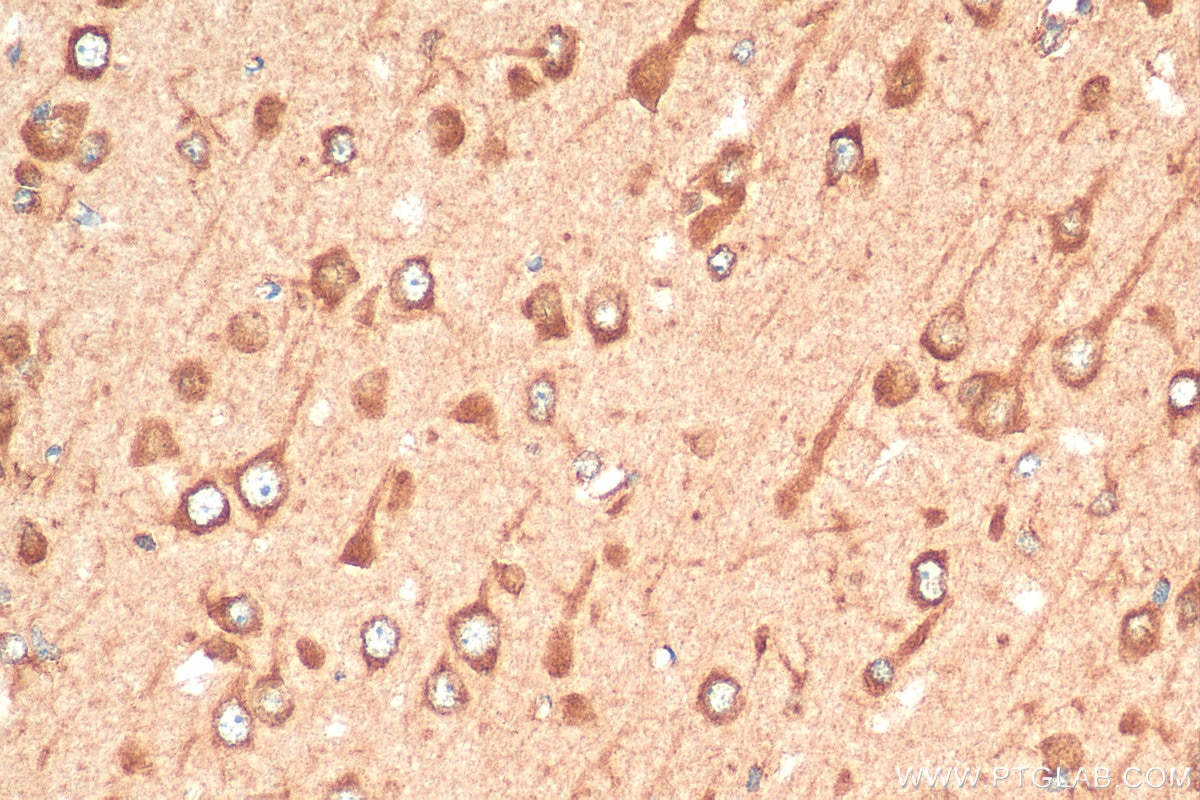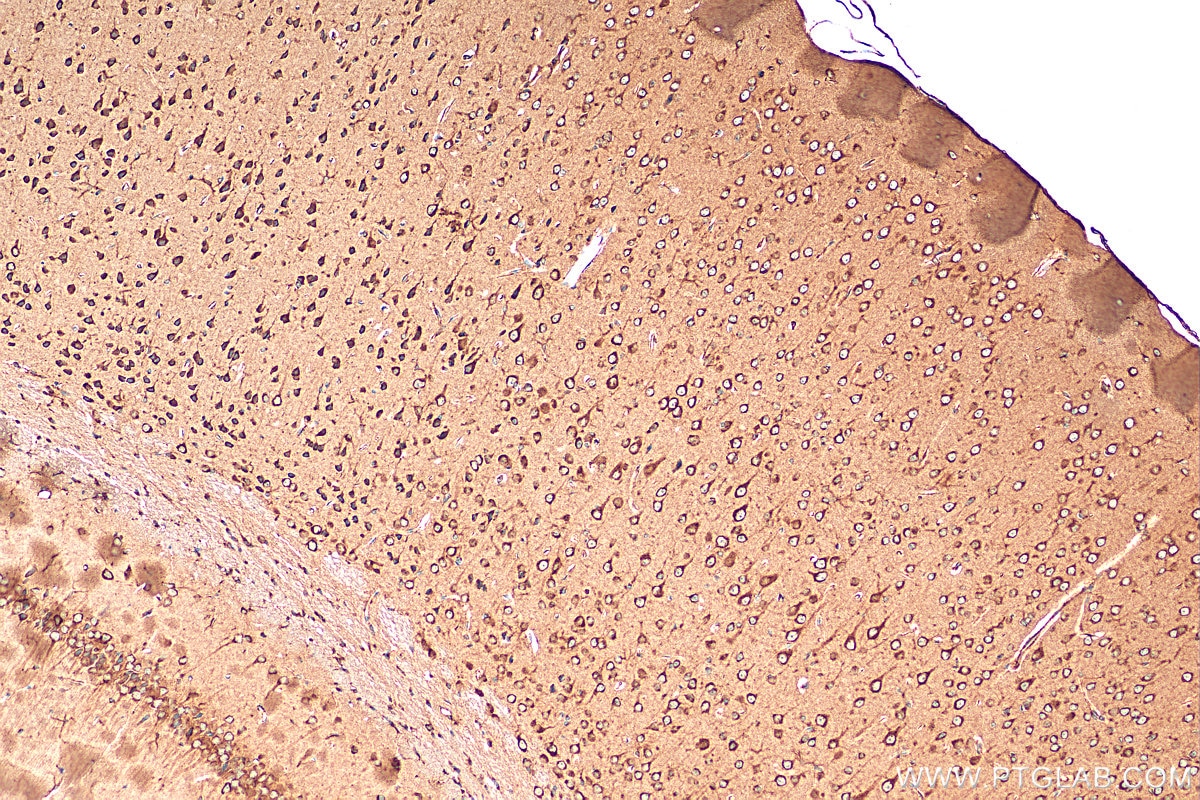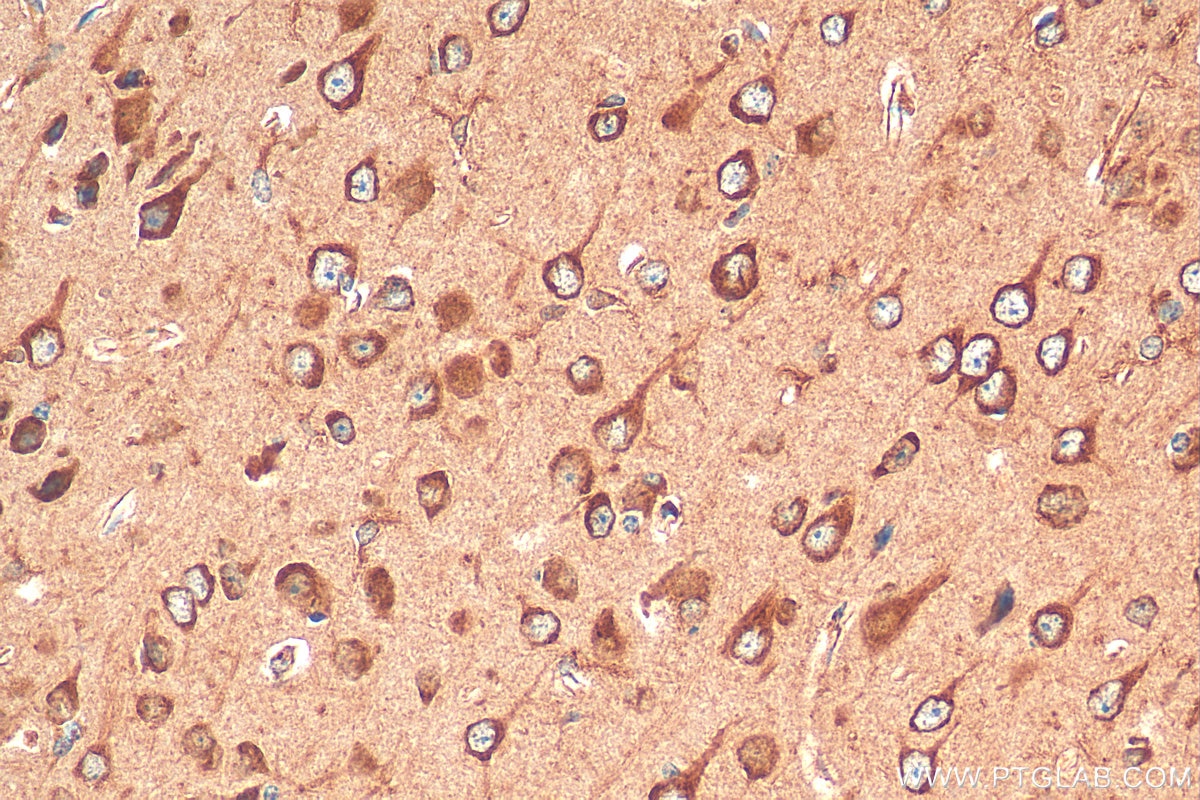Tested Applications
| Positive IHC detected in | rat brain tissue, mouse brain tissue Note: suggested antigen retrieval with TE buffer pH 9.0; (*) Alternatively, antigen retrieval may be performed with citrate buffer pH 6.0 |
Recommended dilution
| Application | Dilution |
|---|---|
| Immunohistochemistry (IHC) | IHC : 1:50-1:500 |
| It is recommended that this reagent should be titrated in each testing system to obtain optimal results. | |
| Sample-dependent, Check data in validation data gallery. | |
Product Information
20721-1-AP targets OTOF in IHC, ELISA applications and shows reactivity with human, mouse, rat samples.
| Tested Reactivity | human, mouse, rat |
| Host / Isotype | Rabbit / IgG |
| Class | Polyclonal |
| Type | Antibody |
| Immunogen |
Peptide Predict reactive species |
| Full Name | otoferlin |
| Calculated Molecular Weight | 227 kDa |
| GenBank Accession Number | NM_004802 |
| Gene Symbol | OTOF |
| Gene ID (NCBI) | 9381 |
| RRID | AB_3085618 |
| Conjugate | Unconjugated |
| Form | Liquid |
| Purification Method | Antigen affinity purification |
| UNIPROT ID | Q9HC10 |
| Storage Buffer | PBS with 0.02% sodium azide and 50% glycerol, pH 7.3. |
| Storage Conditions | Store at -20°C. Stable for one year after shipment. Aliquoting is unnecessary for -20oC storage. 20ul sizes contain 0.1% BSA. |
Background Information
Otoferlin, a C2 domain transmembrane protein, is a major calcium sensor regulating extracellular secretion in mammalian internal hair cells. Deafness caused by mutations in the OTOF gene encoding Otoferlin is a recessive genetic disorder, a sensorineural deafness. It is expressed in the brain, inner hair cells and vestibular hair cells.(PMID: 17055430; PMID: 17229086)
Protocols
| Product Specific Protocols | |
|---|---|
| IHC protocol for OTOF antibody 20721-1-AP | Download protocol |
| Standard Protocols | |
|---|---|
| Click here to view our Standard Protocols |










